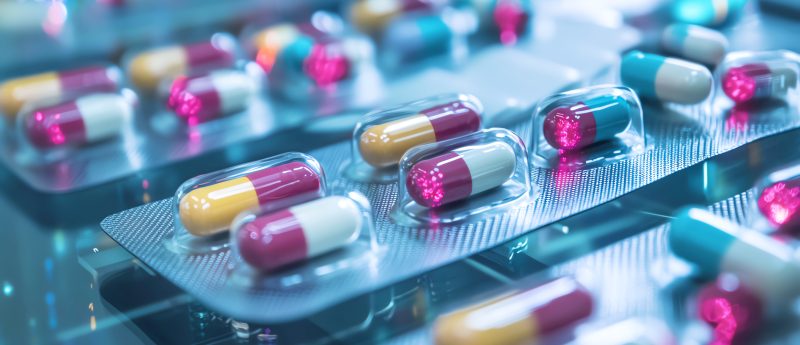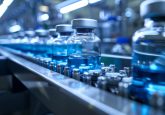The alchemy of biosimilars: the dawn of a new epoch

In his first column, Joseph Pategou examines the biosimilar market and how it has evolved in recent years, touching on global approval dynamics, regulatory developments and future growth opportunities.
In 2020, I explored the biosimilar development landscape in an article titled “Private Equity: A New Pillar for Biosimilar Development?” The findings revealed significant trends shaping the industry.
At that time, the global biosimilar market was valued at US$11.8 billion and was expected to grow to US$35.7 billion at a compound annual growth rate (CAGR) of 24.7%. The market was segmented geographically into North America, Europe, Asia Pacific, Latin America and the Middle East & Africa. A report from the International Generic and Biosimilar Medicines Association (IGBA) highlighted that Europe led with 54 approved biosimilars, followed by the US with 23, Japan with 18, and Canada with 17.
This rapid growth was attributed to several key factors. The patent expirations of major biologic products opened the door for biosimilar development, while the launch of new biosimilars and the rising incidence of chronic disorders drove market demand. Additionally, new market participants contributed to the competitive landscape, accelerating innovation and production.
Private equity investment also became a crucial driver in the biosimilar sector. For instance, CBC Group (Singapore) and Samsung Bioepis (Incheon, South Korea) entered into a licensing agreement to expand their capabilities. PAG (Hong Kong) made headlines by acquiring a 58% stake in Hisun BioRay for US$540 million. Similarly, Biocon (Bengaluru, India) attracted significant investments, with True North acquiring a 2.44% stake for US$74.6 million and Tata Capital Growth Fund (Mumbai, India) acquiring a 0.85% stake for US$30 million.
More than 5 years later, it is worth examining how the biosimilar market has evolved.
Biosimilar approval dynamics across continents
While the geographic segmentation of North America, Europe, Asia Pacific, Latin America and the Middle East & Africa remains broadly consistent, the dynamics of biosimilar approvals have shifted significantly. According to the IGBA’s November 2024 report, Singapore now leads globally with 146 approved biosimilars, followed by India with 128 and the European Union with 110. In the Americas, Brazil leads with 65 approvals, trailed closely by Canada with 64 and the United States with 60. In Africa, notable leaders include Egypt with 56 approvals and South Africa with 31.
Despite these shifts, Europe remains the global leader in biosimilar utilization, accounting for over 50% of the global market. Since 2006, 5.8 billion patients have been treated with EU-approved biosimilars. By 2028, biosimilars are expected to represent more than 50% of the off-patent competition in Europe. Furthermore, the economic impact has been substantial: cumulative savings from biosimilar medicines in Europe reached €50 billion between 2006 and 2023, with €10 billion saved in 2023 alone.
Regulatory developments transforming biosimilar development
Significant regulatory shifts are reshaping the biosimilar landscape in 2024. The FDA (MD, USA) has proposed guidance to eliminate the requirement for switching studies for biosimilars seeking an interchangeable designation. Additionally, the Centers for Medicare & Medicaid Services (CMS) announced that biosimilars could now be substituted during regular formulary maintenance changes, regardless of their interchangeable status.
In a groundbreaking move, the FDA has shown openness to waiving phase 3 trial requirements on a case-by-case basis if pharmacokinetic and pharmacodynamic data strongly support clinical similarity. While this remains under discussion in the US, the UK has already discontinued the mandatory requirement for all biosimilars to undergo phase 3 confirmatory efficacy trials.
These regulatory changes are expected to significantly impact the timeline and cost of developing biosimilars. Currently, biosimilar development costs range between US$100 million and US$300 million, with timelines spanning 7–8 years. Removing the interchangeability study could reduce costs to US$75 million–US$250 million and shorten timelines to 6.5–7.5 years. If both interchangeability and phase 3 studies are removed, the cost could drop to US$50 million–US$75 million, with development timelines compressed to 5–6 years.
To further promote innovation and market competition, the FDA has launched the Biosimilars Action Plan (BAP), aimed at streamlining development pathways for biosimilars and interchangeable products. Meanwhile, CMS has introduced a temporary payment increase under Medicare Part B for qualifying biosimilars, aiming to enhance access and utilization across the healthcare system.
Billion-dollar opportunity in biosimilars
The biosimilar market presents a significant opportunity to drive competition in the biologics space, with over 1,000 biosimilars currently covering more than ten therapeutic areas. Over the next decade, approximately US$200 billion in revenue from 150 molecules will face the loss of exclusivity. Nine molecules will face an intense competition due to their annual revenue exceeding US$5 billion, which accounts for 45% of the total revenue pool.
According to Fortune Business Insights, the global biosimilars market is projected to reach US$73.03 billion by 2030, growing at a compound annual growth rate (CAGR) of 17.3% during the forecast period. Europe is expected to remain the dominant market, holding more than 40% of the global share.
Conclusion
The biosimilar market has evolved significantly over the past 5 years, with notable changes in regulations, market growth and approvals. This positive trend is set to continue, offering growing opportunities for patients, with over 110 new biologic medicines opening to biosimilar competition by 2032. In Europe, a US$53.5 billion market will be exposed to competition between 2024 and 2032. However, biosimilar medicines opportunity remains largely untapped with only 14% volume share of the accessible market in Europe.
Despite the potential, biosimilar adoption faces challenges, including limited education among patients and healthcare providers, as well as regulatory hurdles like complex approval processes and ongoing patent litigation.
About the author:
 Joseph Pategou has authored over 30 articles in esteemed journals such as Cell and Gene Therapy, The Indian Economist, Labotech.eu, Drug Discovery & Development and others. A former consultant at Boston Consulting Group (MA, USA) in New York, he has held and continues to hold operational roles in biopharma companies. The views expressed are his own. He holds an MBA from New York University (USA) and a master’s degree from HEC Paris (France). You can connect with and follow him on LinkedIn, Instagram, or Twitter.
Joseph Pategou has authored over 30 articles in esteemed journals such as Cell and Gene Therapy, The Indian Economist, Labotech.eu, Drug Discovery & Development and others. A former consultant at Boston Consulting Group (MA, USA) in New York, he has held and continues to hold operational roles in biopharma companies. The views expressed are his own. He holds an MBA from New York University (USA) and a master’s degree from HEC Paris (France). You can connect with and follow him on LinkedIn, Instagram, or Twitter.
Sources:
- Pategou J. Private Equity: A New Pillar for Biosimilar Development? (2020): www.biosimilardevelopment.com/doc/private-equity-a-new-pillar-for-biosimilar-development-0001 [Accessed February 2025].
- Pategou J. The Opportunities & Challenges of India’s Biologics Market. (2021): www.biosimilardevelopment.com/doc/the-opportunities-challenges-of-india-s-biologics-market-0001 [Accessed February 2025].
- Pategou J. Africa’s Biosimilar Landscape: Outlook & Current Challenges. (2020): www.biosimilardevelopment.com/doc/africa-s-biosimilar-landscape-outlook-current-challenges-0001 [Accessed February 2025]. Link
- Pategou J. The China Biosimilars Market: Rise of a Potential Powerhouse. (2019): www.biosimilardevelopment.com/doc/the-china-biosimilars-market-rise-of-a-potential-powerhouse-0001 [Accessed February 2025].
- European Medicines Agency (EMA). www.ema.europa.eu/en/homepage [Accessed February 2025]
- Medicines for Europe. Advancing Biosimilars to Improve Patient Access. www.medicinesforeurope.com/ [Accessed February 2025].
- US Food and Drug Administration. Biosimilars Action Plan. (2024): www.fda.gov/drugs/biosimilars/biosimilars-action-plan [Accessed February 2025].
- Chen L, Bush B and Hall C. Rising Tide Lifts US Biosimilars Market. (2024): www.bcg.com/publications/2024/rising-tide-lifts-us-biosimilars-market [Accessed February 2025].
- Sheynin N. Trends in the Biosimilars Market. (2024): www.alpha-sense.com/blog/trends/biosimilars-market/ [Accessed February 2025].
- Fortune Business Insights. Biosimilars Market Report. (2025): www.fortunebusinessinsights.com/biosimilars-market-108928 [Accessed February 2025].
Our expert opinion collection provides you with in-depth articles written by authors from across the field of bioanalysis. Our expert opinions are perfect for those wanting a comprehensive, written review of a topic or looking for perspective pieces from our regular contributors.
See an article that catches your eye? Read any of our articles below for free.





